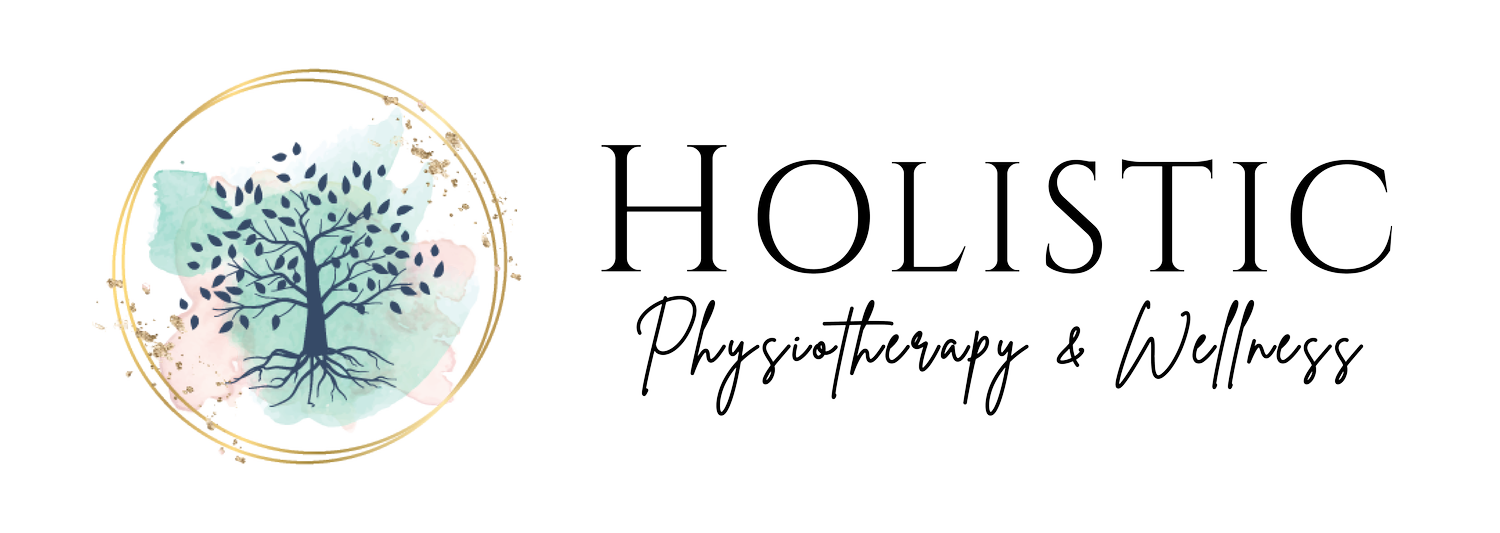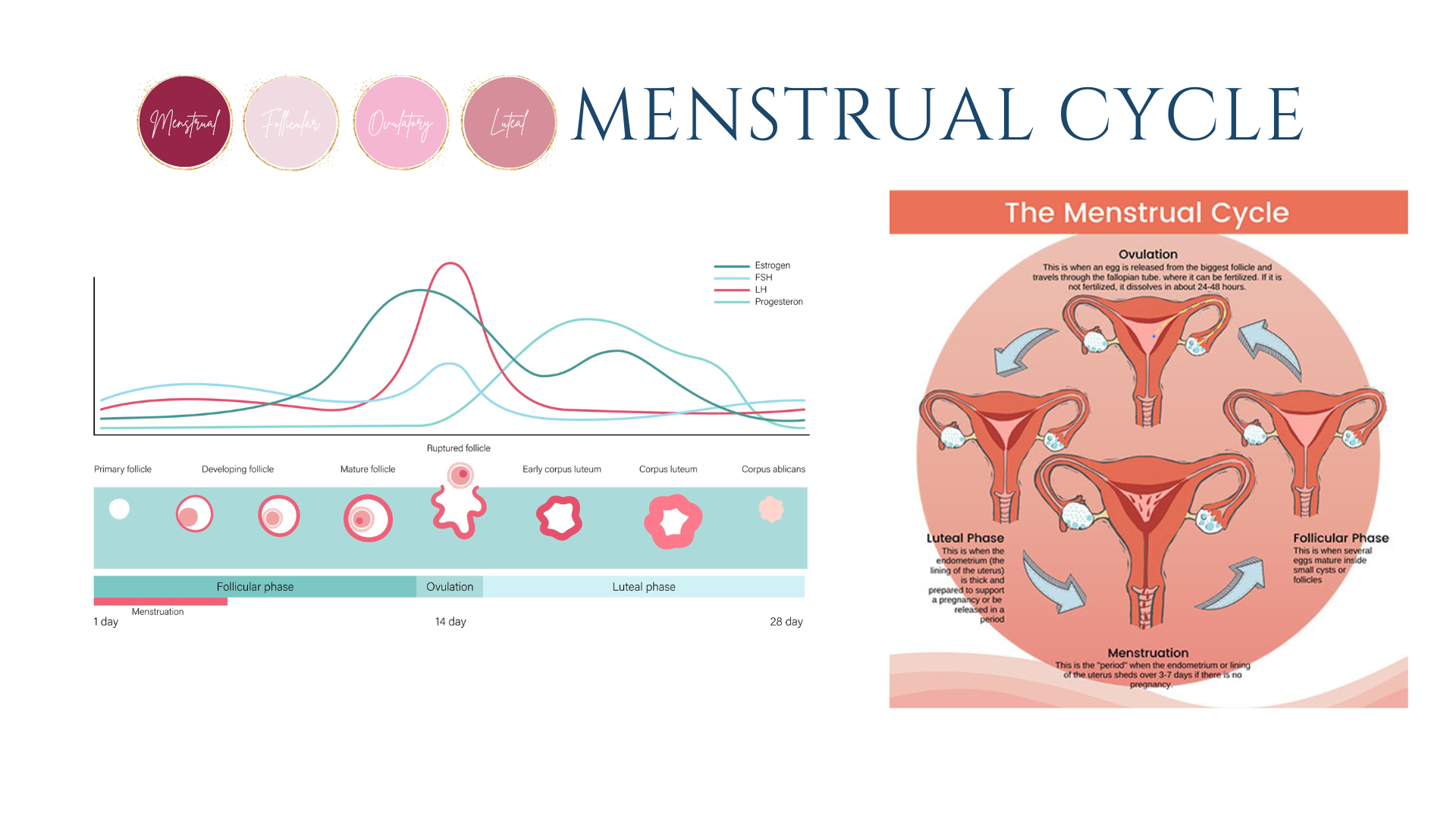Menstrual Cycle and Hormones
What Every Woman Should Know About Her Menstrual Cycle and Hormone Imbalances
By Kim Deschamps
Founder & CEO, Physiotherapist, Pelvic Health Therapist, Professional Yoga Therapist, Dry Needling Practitioner | Sept 4, 2023
Our bodies are always talking to us. As a women’s health professional, it is my passion to listen to women and their health stories to identify a pattern with the signs and symptoms so I can help her feel her best. I also believe in empowerment, which is why I’m outlining some information that every menstruating woman should know, so that you can take charge of your own wellness.
Starting with the essentials: a menstrual cycle is composed of four phases. Menstrual is the beginning of the cycle. It is marked by the first day of flow and typically lasts 3 to 7 days. Then we move into the follicular phase, when our estrogen levels rise to induce ovulation; this phase lasts 7-10 days. Then the 3-4 day ovulatory phase, when our basal body temperature rises and an egg is released into the uterus. Finally, during the luteal phase, estrogen and progesterone hormones rise to prepare for pregnancy. If there is no pregnancy, those levels then drop and the cycle begins again.
Our bodies have long been attuned to this 28-day cycle, also known as an Infradian Rhythm (as opposed to the 24-hour/day Circadian Rhythm). The rise and fall of our hormone levels throughout the month corresponds to the four phases of our menstrual cycle. Unfortunately, it’s not difficult to get out of sync and suffer from common hormone imbalances.
There are many, many clues that our bodies give us when those hormone levels aren’t matching our physical needs. They can impact your menstrual cycle, making it too long, too short, bleeding that is too heavy, too light, or nonexistent. Pelvic pain, breast tenderness, headaches, hot flashes, or vaginal dryness.
Many women also experience hormonal imbalances showing up as severe mood swings, energy concerns like fatigue or insomnia, skin that is too oily (acne!) or too dry, and it can even impact our hair and our weight.
There are many potential root causes for these hormone imbalances. The best known are premenstrual syndrome (PMS) and premenstrual dysphoric disorder (PMDD). Polycystic ovarian syndrome, or PCOS, is another common endocrine disorder that affects up to 10% of women during their menstruating years.
We also look at dysmenorrhea, or menstrual cramping, menorrhagia, or heavy menstrual flow, and uterine fibroids. Also on the list is endometriosis, which can cause discomfort and affect fertility, but is not yet fully understood.
The bottom line is that any of the symptoms we listed above could be linked to hormone imbalances caused by the conditions we outlined. It can be difficult to diagnose yourself on your own, and the good news is that you don’t have to.
If you’re concerned about a hormone imbalance, the best thing to do is to speak with a healthcare provider who can run tests, like bloodwork or imaging, to get a clear picture of what’s really going on in your body. We can also talk about lifestyle medicine and how you can adjust your life - through diet, exercise, sleep, blood sugar stabilizing, and stress management, to get those hormone levels back where they belong.
One thing I want to share is that self-care, hormone imbalance or not, is simply the best thing you can do to maintain your wellness.
These 7 steps will help you on your way to being your healthiest self:
Prioritize sleep
Find an exercise routine that works for you
Stay connected with loved ones
Make time for hobbies or learning
Practice mindfulness and meditation
Eat well and hydrate
Where appropriate, consider using supplements.
At Holistic Physiotherapy & Wellness, we have many services to assist women in balancing their hormones. Lifestyle medicine can be a fantastic choice for anyone ready to make healthy and positive changes to improve their wellness. We can guide you through ideal nutrition and workout plans for each phase of your menstrual cycle!
We also offer The Power of Femininity Club, a community course complete with tool kits and guides to balance your hormones in every stage of life. Learn about cycle syncing to unlock your hormonal advantage and access on-demand Pilates, Yoga, and Movement Practices, and Pain Care Education. It’s truly amazing what is all available within this course!!
Your body is talking to you. Listen closely, and if you need any help interpreting those signs and symptoms, don’t hesitate to book in for a Free 15-minute Discovery Call with me and I can share how Lifestyle Medicine and PhysioYoga can help!
With grace,
Kim Deschamps
Kim Deschamps
MPT, BKin, PYT, BDN




